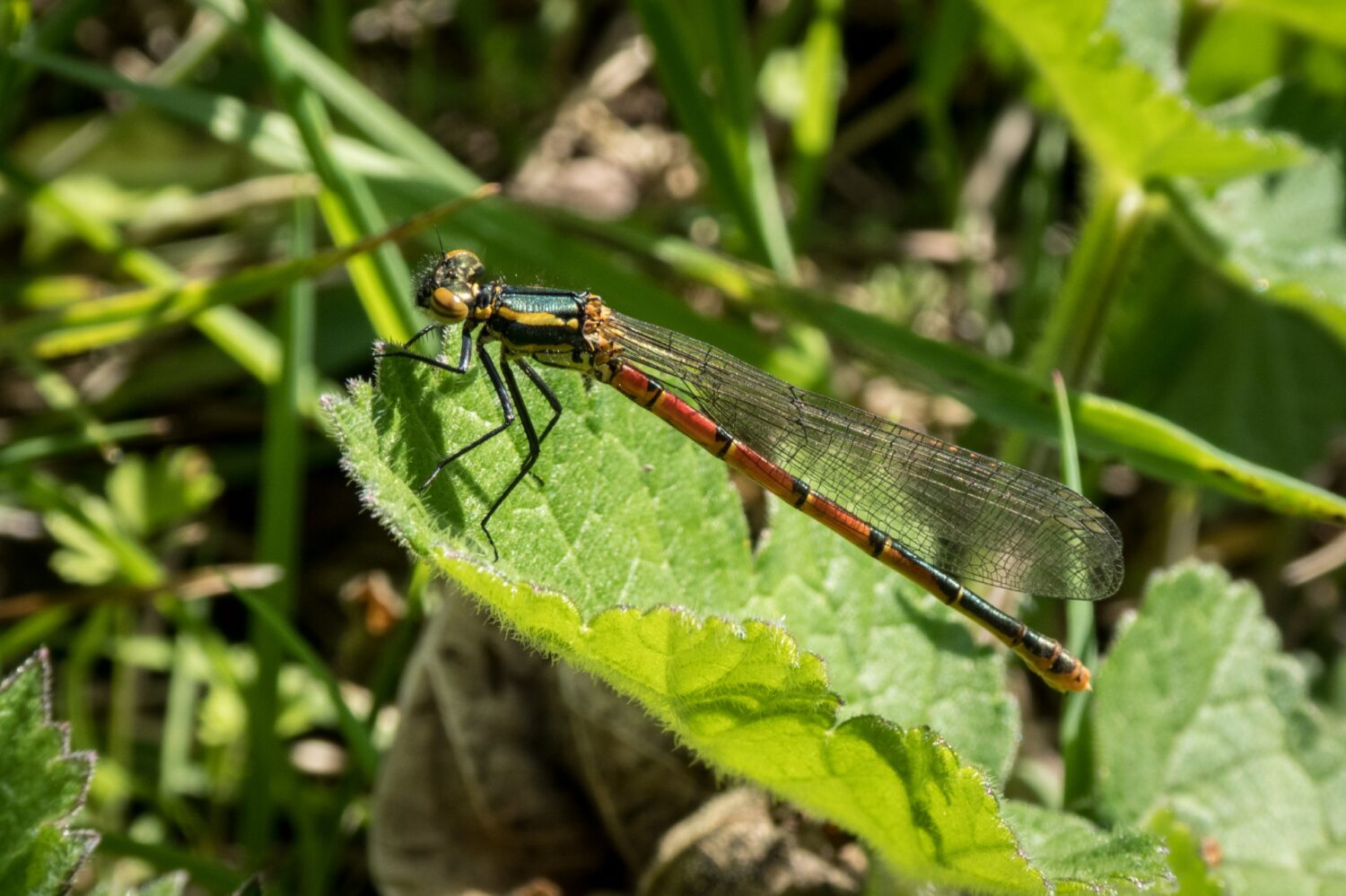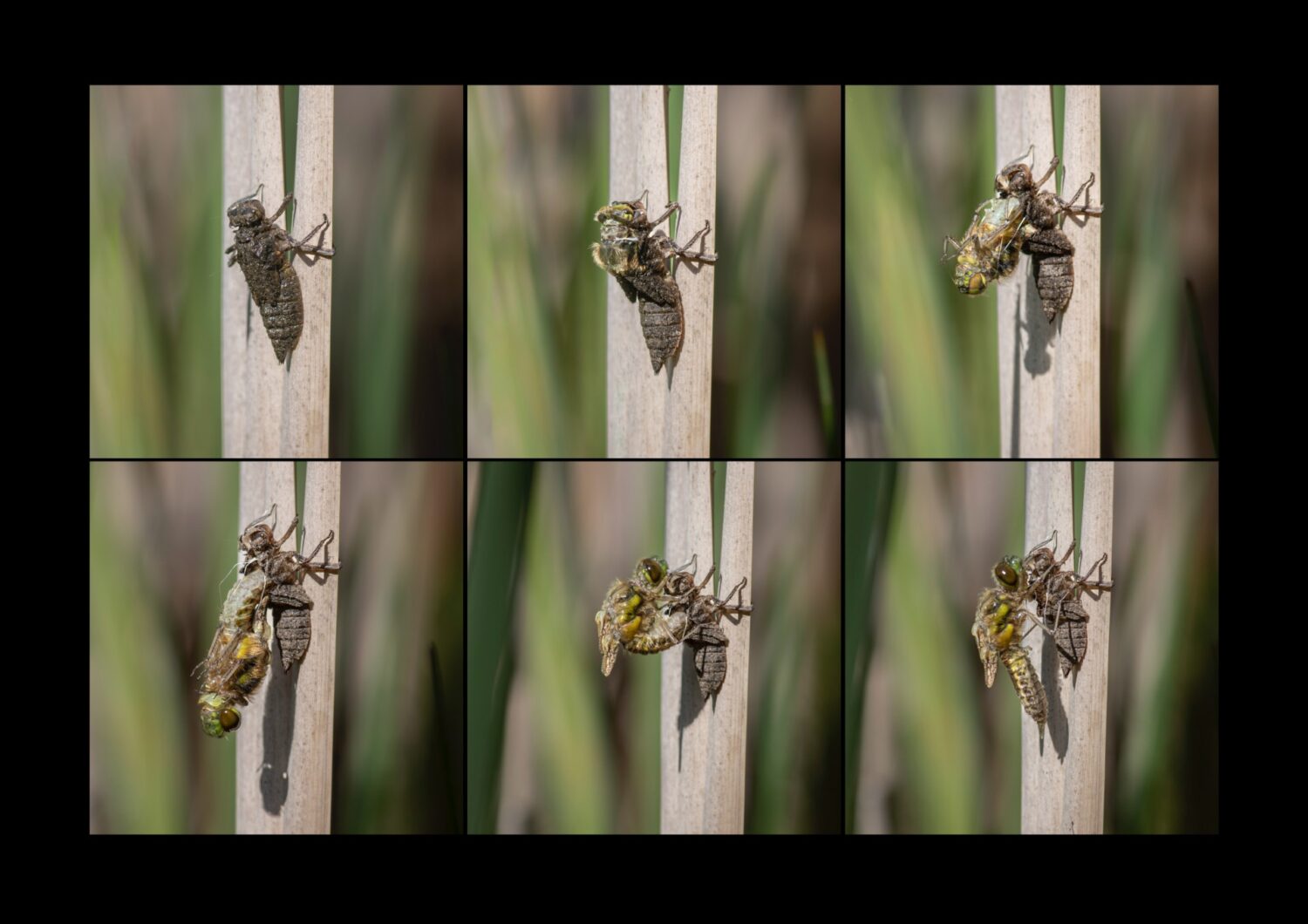Enjoy a closer look at the early season dragonflies and damselflies to be found at Gosforth Nature Reserve in a new blog by local naturalist and volunteer, Christopher Wren.
May sees the start of our dragonfly season, with four species of damselfly and two dragonflies appearing before the end of the month. Damselflies and dragonflies share a similar life cycle, spending most of their lives as nymphs underwater, before emerging to fly for a few short weeks to breed. Damselflies usually mature within a year while dragonflies take two or more years.
Large Red Damselfly (Pyrrhosoma nymphula)
Always the earliest to appear, the first record this year was on 2nd May. The male is mostly red with a few bronze-black markings. The red eyes of this one show it is mature.

The female has a thicker abdomen and more extensive dark markings. The pale eyes of this example show it is immature.

Blue-tailed Damselfly (Ischnura elegans)
Smaller than the other damselflies, The male is mainly black with blue at both ends and two-coloured wing spots.

The female comes in many different colours – blue, green, violet, brown, orange or salmon pink – and not all have a blue “tail”. The female in this pair is the brown form, rufescens obseleta.

Azure Damselfly (Coenagrion puella)
The most numerous damselfly at the moment, brilliant blue with a short black line (coenagrion spur) on the side of the thorax and a U-shaped black mark on S2 at the front of the abdomen.

Females are usually green with similar markings to the males.#

Common Blue Damselfly (Enallagma cyathigerum)
The male is very similar in colour to the Azure Damselfly, this one is slightly larger with broader shoulder stripes and a bluer “tail”.

Females come in green or blue forms, turning browner with age.

Four-spotted Chaser (Libellula quadrimaculata)
This is the first dragonfly to emerge and occurs in large numbers on the Heath Pond and the Meadow Pond. The header photo at the top of this blog was taken last weekend at the Heath Pond. It shows a newly emerged (teneral) Four-spotted Chaser moments before its first flight. The male and female are very similar in appearance and look dark in flight. They often rest on a favourite perch and frequently return to the same spot. This one is a female.

The next two photos show the emergence (eclosion) of a Four-spotted Chaser on the Meadow Pond last year. The whole process took two hours.


Broad-bodied Chaser (Libellula depressa)
This dragonfly is a colonist of new ponds and soon moved into the Meadow and Heath Ponds after their construction but has been less visible in the past couple of years. The male is powdery blue.

and the female is mainly yellow, getting darker with age.

If you do see a Broad-bodied Chaser in the reserve this year be sure to report it to the Gosforth Wide Web. June will see Emperor dragonflies patrolling the ponds, the first Common Darters, perhaps an early Southern Hawker and, if we are lucky, a Black-tailed Skimmer.